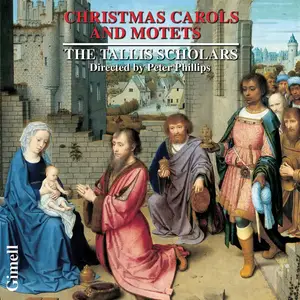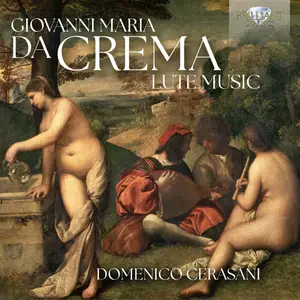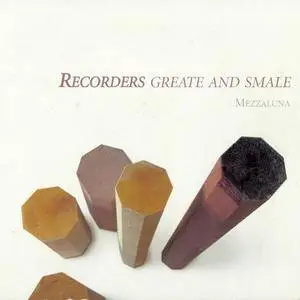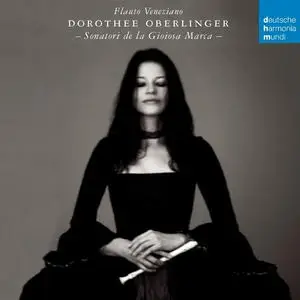Verdelot, Philippe
Peter Phillips, The Tallis Scholars - Christmas Carols and Motets (1986) Music
Posted by ArlegZ at Dec. 8, 2024
Peter Phillips, The Tallis Scholars - Christmas Carols and Motets (1986)
EAC | FLAC | Image (Cue & Log) ~ 233 Mb | Total time: 56:57 | Scans included
Classical | Label: Gimell | # CDGIM010 | Recorded: 1986
EAC | FLAC | Image (Cue & Log) ~ 233 Mb | Total time: 56:57 | Scans included
Classical | Label: Gimell | # CDGIM010 | Recorded: 1986
This recording presents three traditional ways of celebrating Christmas in music – medieval carols, Renaissance motets praising the Virgin Mary, and German chorales. The medieval pieces are sung in their original forms, without modern ‘arrangement’. All those performed here are of English provenance, and culminate in three versions of the Coventry Carol, which include Byrd’s famous Lullaby.
Seon - Excellence in Early Music [85CD Box Set] Vol.1 (2014) Music
Posted by Discograf_man at Nov. 28, 2021
Seon - Excellence in Early Music [85CDs] Vol.1 (2014)
MP3 320 kbps | 2,41 Gb | Total time: 77:26:37 | Scans 235,59 Mb
Classical | Label: Sony | Recorded: 1970-1984
MP3 320 kbps | 2,41 Gb | Total time: 77:26:37 | Scans 235,59 Mb
Classical | Label: Sony | Recorded: 1970-1984
SEON (Studio Erichson) is a period music label by the legendary producer Wolf Erichson. Erichson founded the label in 1969 as one of the first labels dedicated only to authentic music. The recordings were made with the best available recording techniques of the time and still deliver a high quality product in line with today's standards. This special boxset offers all SEON CD reissues from the late 90s on 85 CDs in a limited edition boxset.
Seon - Excellence in Early Music [85CDs] Part 1 (2014) Music
Posted by ArlegZ at Feb. 9, 2025
Seon - Excellence in Early Music [85CDs] Part 1 (2014)
EAC | FLAC | Image (Cue & Log) ~ 4,84 Gb | Total time: 77:26:37 | Scans included
Classical | Label: Sony | # 88843089382 | Recorded: 1970-1984
EAC | FLAC | Image (Cue & Log) ~ 4,84 Gb | Total time: 77:26:37 | Scans included
Classical | Label: Sony | # 88843089382 | Recorded: 1970-1984
SEON (Studio Erichson) is a period music label by the legendary producer Wolf Erichson. Erichson founded the label in 1969 as one of the first labels dedicated only to authentic music. The recordings were made with the best available recording techniques of the time and still deliver a high quality product in line with today's standards. This special boxset offers all SEON CD reissues from the late 90s on 85 CDs in a limited edition boxset.
Domenico Cerasani - Da Crema: Lute Music (2024) [Official Digital Download] Vinyl & HR
Posted by delpotro at May 28, 2024
Domenico Cerasani - Da Crema: Lute Music (2024)
FLAC (tracks) 24-bit/44,1 kHz | Front Cover | Time - 57:30 minutes | 464 MB
Classical | Label: Brilliant Classics, Official Digital Download
FLAC (tracks) 24-bit/44,1 kHz | Front Cover | Time - 57:30 minutes | 464 MB
Classical | Label: Brilliant Classics, Official Digital Download
Giovanni Maria da Crema remains to this day a mysterious figure in the history of the lute, with very little information known about his life. However his oeuvre is crucial to understanding the lute’s place in 16th-century Italy. His Libro primo, published in Venice by Antonio Gardane in 1546, is presented as an edition “newly reprinted and corrected by the author himself”, indicating the existence of a rival prior edition, namely that published by Girolamo Scotto, with the same contents and minimal differences. Two years later, also in Venice, Scotto would publish Francesco da Milano’s Libro settimo which also includes keyboard pieces by Giulio Segni da Modena intabulated for the lute by Giovanni Maria da Crema. Some of these intabulations had already appeared in Giovanni Maria da Crema’s Libro primo without mention of Giulio Segni’s authorship of the keyboard original.
Domenico Cerasani - Da Crema: Lute Music (2024) Music
Posted by delpotro at May 29, 2024
Domenico Cerasani - Da Crema: Lute Music (2024)
WEB FLAC (tracks) - 195 Mb | MP3 CBR 320 kbps - 138 Mb | Digital booklet | 00:57:30
Classical | Label: Brilliant Classics
WEB FLAC (tracks) - 195 Mb | MP3 CBR 320 kbps - 138 Mb | Digital booklet | 00:57:30
Classical | Label: Brilliant Classics
Giovanni Maria da Crema remains to this day a mysterious figure in the history of the lute, with very little information known about his life. However his oeuvre is crucial to understanding the lute’s place in 16th-century Italy. His Libro primo, published in Venice by Antonio Gardane in 1546, is presented as an edition “newly reprinted and corrected by the author himself”, indicating the existence of a rival prior edition, namely that published by Girolamo Scotto, with the same contents and minimal differences. Two years later, also in Venice, Scotto would publish Francesco da Milano’s Libro settimo which also includes keyboard pieces by Giulio Segni da Modena intabulated for the lute by Giovanni Maria da Crema. Some of these intabulations had already appeared in Giovanni Maria da Crema’s Libro primo without mention of Giulio Segni’s authorship of the keyboard original.
Domenico Cerasani - Da Crema: Lute Music (2024) [Official Digital Download] Vinyl & HR
Posted by delpotro at May 28, 2024
Domenico Cerasani - Da Crema: Lute Music (2024)
FLAC (tracks) 24-bit/44,1 kHz | Front Cover | Time - 57:30 minutes | 464 MB
Classical | Label: Brilliant Classics, Official Digital Download
FLAC (tracks) 24-bit/44,1 kHz | Front Cover | Time - 57:30 minutes | 464 MB
Classical | Label: Brilliant Classics, Official Digital Download
Giovanni Maria da Crema remains to this day a mysterious figure in the history of the lute, with very little information known about his life. However his oeuvre is crucial to understanding the lute’s place in 16th-century Italy. His Libro primo, published in Venice by Antonio Gardane in 1546, is presented as an edition “newly reprinted and corrected by the author himself”, indicating the existence of a rival prior edition, namely that published by Girolamo Scotto, with the same contents and minimal differences. Two years later, also in Venice, Scotto would publish Francesco da Milano’s Libro settimo which also includes keyboard pieces by Giulio Segni da Modena intabulated for the lute by Giovanni Maria da Crema. Some of these intabulations had already appeared in Giovanni Maria da Crema’s Libro primo without mention of Giulio Segni’s authorship of the keyboard original.
Domenico Cerasani - Da Crema: Lute Music (2024) Music
Posted by delpotro at May 29, 2024
Domenico Cerasani - Da Crema: Lute Music (2024)
WEB FLAC (tracks) - 195 Mb | MP3 CBR 320 kbps - 138 Mb | Digital booklet | 00:57:30
Classical | Label: Brilliant Classics
WEB FLAC (tracks) - 195 Mb | MP3 CBR 320 kbps - 138 Mb | Digital booklet | 00:57:30
Classical | Label: Brilliant Classics
Giovanni Maria da Crema remains to this day a mysterious figure in the history of the lute, with very little information known about his life. However his oeuvre is crucial to understanding the lute’s place in 16th-century Italy. His Libro primo, published in Venice by Antonio Gardane in 1546, is presented as an edition “newly reprinted and corrected by the author himself”, indicating the existence of a rival prior edition, namely that published by Girolamo Scotto, with the same contents and minimal differences. Two years later, also in Venice, Scotto would publish Francesco da Milano’s Libro settimo which also includes keyboard pieces by Giulio Segni da Modena intabulated for the lute by Giovanni Maria da Crema. Some of these intabulations had already appeared in Giovanni Maria da Crema’s Libro primo without mention of Giulio Segni’s authorship of the keyboard original.
Mezzaluna - Recorders Greate and Smale (2009) Music
Posted by tirexiss at March 16, 2023
Mezzaluna - Recorders Greate and Smale (2009)
EAC | FLAC (image+.cue, log) | Covers Included | 66:09 | 327 MB
Genre: Classical | Label: Ramée | Catalog: RAM 0907
EAC | FLAC (image+.cue, log) | Covers Included | 66:09 | 327 MB
Genre: Classical | Label: Ramée | Catalog: RAM 0907
This is an extremely enjoyable disc of music for Recorder Consort as it might have been played at the Courts of Henry VIII and Elizabeth I. It includes pieces by Henry himself and by William Byrd, but most of it is by non-English composers because, as is explained in the notes, much of the fine English music of the time is not feasible for a Recorder Consort. The composers are very fine, though, and include Isaac, Arcadelt, Lassus, both Ferraboscos and others. It makes a thoroughly enjoyable programme.
The King's Singers - Madrigals & Songs from the Renaissance [8CDs] (2018) Music
Posted by ArlegZ at April 18, 2021
The King's Singers - Madrigals & Songs from the Renaissance [8CDs] (2018)
EAC | FLAC | Image (Cue & Log) ~ 1.87 Gb | Total time: 07:21:41 | Scans included
Classical | Label: Warner Classics | # 9029570282 | Recorded: 1974-1990
EAC | FLAC | Image (Cue & Log) ~ 1.87 Gb | Total time: 07:21:41 | Scans included
Classical | Label: Warner Classics | # 9029570282 | Recorded: 1974-1990
In 1968, six former choral scholars from King’s College, Cambridge established the King’s Singers, later described by The Times as “the superlative vocal sextet”. The group has always comprised two countertenors, a tenor, two baritones and a bass, and over the years it has proved consistently exceptional for vocal distinction and breadth and diversity of repertoire. This celebratory collection of eight CDs focuses on Renaissance composers from Italy, England, France, Spain, Germany and the Low Countries.
Dorothee Oberlinger, Sonatori de la Gioiosa Marca - Flauto Veneziano (2012) Music
Posted by ArlegZ at Nov. 25, 2023
Dorothee Oberlinger, Sonatori de la Gioiosa Marca - Flauto Veneziano (2012)
EAC | FLAC | Image (Cue & Log) ~ 370 Mb | Total time: 68:54 | Scans included
Classical | Label: Deutsche Harmonia Mundi | # 88691955142 | Recorded: 2011
EAC | FLAC | Image (Cue & Log) ~ 370 Mb | Total time: 68:54 | Scans included
Classical | Label: Deutsche Harmonia Mundi | # 88691955142 | Recorded: 2011
Die Blockflötistin und ECHO Klassik-Preisträgerin Dorothee Oberlinger ist mittlerweile weit über die Alte Musik- und die Klassik-Szene hinaus bekannt. Erst Ende vorigen Jahres widmete die Vogue ihr einen Artikel und in der Talkshow »3nach9« begeisterte sie die Zuschauer, auch durch ihr Duett mit Klaus Doldinger. Auf ihrer neuen CD »Flauto Veneziano« widmet sich Dorothee Oberlinger ganz der Flötenkunst Venedigs von der Renaissance bis zum Spätbarock. Die Blockflöte, im Italienischen bis zum Anfang des 18. Jahrhunderts schlicht »flauto«, war in Venedig bis zur Mitte des 18. Jahrhunderts ein sehr beliebtes und verbreitetes Instrument.

![Seon - Excellence in Early Music [85CD Box Set] Vol.1 (2014)](https://pixhost.icu/avaxhome/70/38/008a3870_medium.jpg)
![Seon - Excellence in Early Music [85CDs] Part 1 (2014)](https://pixhost.icu/avaxhome/65/0a/007a0a65_medium.jpg)
![Domenico Cerasani - Da Crema: Lute Music (2024) [Official Digital Download]](https://pixhost.icu/avaxhome/aa/aaa5/aaa52267d61b433f91c9ae6b8b118f10-9458054024291435667_medium.webp)


![The King's Singers - Madrigals & Songs from the Renaissance [8CDs] (2018)](https://pixhost.icu/avaxhome/44/ff/0082ff44_medium.jpg)
